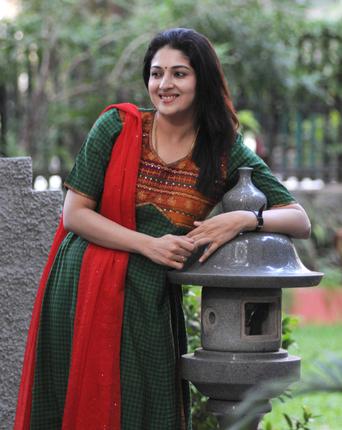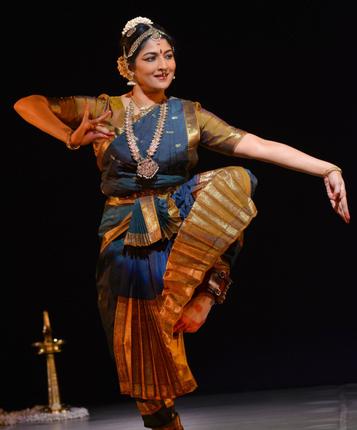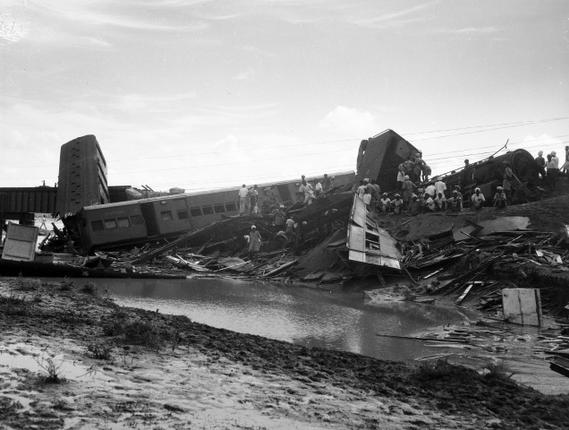
A survivor of a major train disaster in Tamil Nadu shares the trauma she passed through, all of 57 years later
As a fortunate survivor of one of India’s deadliest railway disasters, the Ariyalur train accident, it is time to lay my story and the nightmarish ghosts to rest, by putting my experiences down in writing.
It occurred on November 23, 1956, leaving 142 passengers dead and 110 injured. An estimated 200 people were buried in the debris. Many were missing, their bodies never to be recovered.
Torrential rains had swollen the river Maruthaiyar to a level where the waters almost touched the rails on a bridge between the Ariyalur and Kallagam stations, breaking the embankment to a length of nearly 20 feet, causing flash floods.
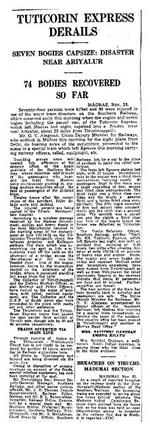
Off the rails
About 2 miles after leaving Ariyalur station and 20 miles away from Trichinopoly (Tiruchirapalli), the train slipped off the rails. Its steam engine and seven timber-built carriages including the parcel van telescoped and fell into the river. The eighth coach derailed and four carriages in the rear remained intact.
Then aged 21, I had boarded the Thoothukudi (Tuticorin) Express at Madras (Chennai) at 9.50 the night before, with my aunt. Like Santa in his gift-filled sleigh, we were laden with our Christmas shopping from Moore Market, an old-fashioned steam engine deputising for the reindeer for our journey to Trichinopoly. We were the only occupants of a bay of the eighth compartment of the 13-coach train, one having been detached at Virudhachalam to go on to Salem separately. After a light meal, we settled down for the night and soon fell into deep sleep.
Our terrifying ordeal began with a tremendous jolt and bang. There was a sizzling hiss of steam and, then, ear-piercing screams. After being left sprawling across the floor of the compartment, my first urge after regaining my composure was to jump out of the train. My aunt grabbed me on time: “Don’t jump! We are on a river,” she screamed. She saved me from a watery grave.
Like a puppet on a string, I ran around the compartment in circles. My watch showed it was 5.30 a.m. Peering out of the window, the first crack of daylight revealed a mighty river that roared eerily as it frothed and rushed furiously, taking everything in its path — trees, train wreckage and bodies of men, women and infants. Perched on a platform on the bridge, the guard yelled, “Get out, your compartment has derailed.” In response, my aunt, in her overpowering voice, shouted: “follow me.” “I can’t,” I cried, clinging to her. Wrenching herself off, she bravely unlatched the door and lowered herself to the step of the compartment precariously. She then clambered along, holding on window to window and heading towards the rear of the train.
In an incredible act of heroism, we were walking back to Ariyalur station to seek help.
Prayer for deliverance
Turning my eye heavenward, I prayed for deliverance. Mustering my courage and leaving the precious parcels behind, I followed my aunt in utter terror along with other passengers who had vacated the eighth coach. I remembered the lines from Tennyson’s ‘The Charge of the Light Brigade’: “…into the valley of death rode…”
My heart pounded, my teeth chattered and I trembled with fear and cold as I gripped the window bars of the compartments. Loosening my grip would mean certain death. Using every ounce of my strength and with unswerving determination I struggled to save my life. With bruised palms I swayed across four compartments and eventually reached the last compartment in the reassuring presence of my aunt. She was a heroine.
Frightening hours
Being stranded there, waiting to be rescued with floodwaters on either side of the track, were the most frightening hours of my life, observing a scene a human eye could never have seen. It has haunted me all my life. The river bank was bathed in blood with human pulp, headless corpses, severed limbs, torsos and heaps of bodies wrecked of life’s esteem.
After an anxious wait of about four hours, the floodwaters gradually abated. Finally, as the river meekly meandered in its course and corpses bobbed in and out of water, we were rescued. A locomotive arrived to tow us safely back to the Ariyalur station.
There were triumphant screams mingled with sadness for those lost in one of the worst disasters that gripped a nation.
joycevernem@hotmail.com
( At the time of the accident, young Joyce Philomena was a clerk at the Golden Rock Railway School in Tiruchi, newly recruited by Southern Railway. Two years later, she was tranferred to the Divisional Railway Superintendent’s office in Tiruchi. She married Clarence Vernem, a Guard with Southern Railway, and moved to Madurai where she continued to work for the Railways until opting for voluntary retirement from service in 1982.
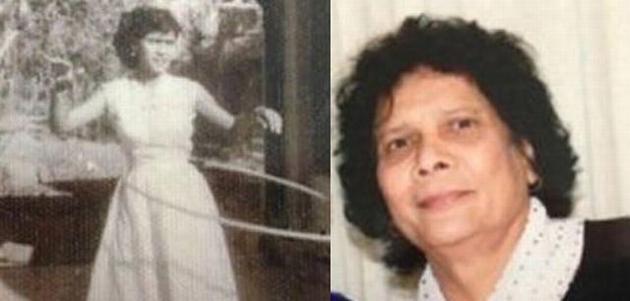
The following year, Mr. Vernem passed away. She migrated to Australia in 1996 to join her two children and their families. She now lives in Melbourne (right). Upon being contacted by The Hindu on the phone on March 1 after she sent in her account to Open Page, Ms. Vernem (who provided the details given here of herself) said she remained terrified of trains for years. She later mustered the courage if only to watch passing trains, and would marvel at “how brave the passengers were” !
After suffering nightmares and sleep-walking disorders, she eventually overcame her dread, and often passed Ariyalur by train. A year shy of 80, she still occasionally takes the train in Australia, and lives a “very active life.”
As for her aunt, Eugene Gilles passed away in 1985.)
source: http://www.thehindu.com / The Hindu / Home> Opinion> Open Page / by Joyce Philomena Vernem / March 02nd, 2014
